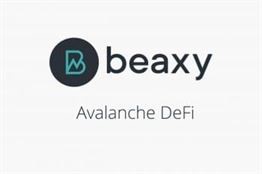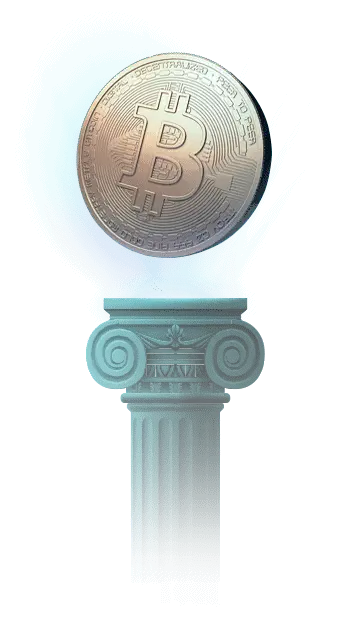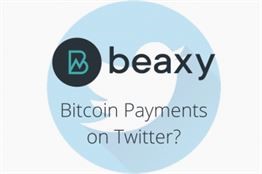Commodity money gave way to the next stage-representative money. In addition to fiat money created through the fractional reserve system, interest rates given and charged by banks also increase money supply, all through mere accounting. The implication of this is that the existence of interest rates would themselves, ceteris paribus, force a continuous increase in money supply, both state money and the bank money . For most of the nineteenth and twentieth centuries’ the majority of currencies were based on representative money through the use of gold standard. The gold standard is a monetary system in which the standard economic unit of account is a fixed weight of gold .
Fiat Money vs. Commodity Money in the Soviet Union https://t.co/qidJg6DBTV via @BitChute
— Ray Edelson (@raysracingworld) June 2, 2021
GreenbacksGreenback refers to the first paper money issued by the United States government in the 19th century to finance the expenses of the American Civil War. Due to its ability to store purchasing power, people can make plans with ease and create specialized economic activities. For example, a business dealing with mobile phone assembly can buy new equipment, hire and pay employees, and expand into other regions. China has a long history with paper money, beginning in the 7th century CE. During the 11th century, the government established a monopoly on its issuance, and about the end of the 12th century, convertibility was suspended. The use of such money became widespread during the subsequent Yuan and Ming dynasties. State-issued money which is neither convertible through a central bank to anything else nor fixed in value in terms of any objective standard. Money is an essential need for every person in their daily lives as they depend upon it for many purposes. Therefore, money is mainly differentiated into three types and here, we have discussed two of them with examples. The values, importance, usages, etc everything differs from each other.
RELATED PAPERS
Blockchain platforms, such as Ethereum, Cardano, and Polkadot, lay the groundwork for decentralized finance . DeFi is an umbrella term for financial services not controlled by a single entity like a fiat bank. Cryptocurrencies exist to challenge the prevailing notions surrounding money and provide an opportunity to help fix the flaws of the current financial system and the fiat economy. The world took notice and realized that the additional US dollars could destabilize the financial system. As a result, other countries converted their greenbacks into gold to build up their reserves. Since there were more US dollars in circulation than bars of gold in the vaults, the States would have run out of gold before it could pay all of those who wanted to redeem their US dollars. All fiat currencies are backed by nothing but trust and faith we put in its value. To put it simply, fiat currencies are valuable because we believe and unanimously agree on their value. To understand why some people believe that cryptocurrencies can be used instead of fiat money, we should first understand what fiat money is.

Quite extraordinary considering the scale of the economic crisis. This reluctance to print more money meant the money in circulation represented more and more goods each year. For instance, in a basic example economy, there is $1 million in circulation and 1,000 cars are made which represent this. However, in five years’ time, there is still $1 million in circulation, but 2,000 cars are now made. As a result, prices adapt to represent the amount of money in circulation. By contrast, gold, silver, or any other commodity is firstly limited by the number of laborers available to mine. Fiat money is a type of currency which derives its value through government decree. The necessity claim implies that one route to a cashless economy is better and better monitoring. But better monitoring is not the only route to a cashless economy.
Cryptocurrency
Around the world, they range from M0 to M3 , but which of the measures is actually the focus of policy formulation depends on a country’s central bank. The reduction in interest rate increases lending activities of the banks. The increase in money supply leads to the reduction in interest rate. Thus, changes in money supply lead to changes in nominal income in the short run. In the long run, since real income is determined by the supply side of the economy, the increase in money supply only leads to the higher price.
Yes, Stablecoins Can Still Bring Stability – Nasdaq
Yes, Stablecoins Can Still Bring Stability.
Posted: Wed, 20 Jul 2022 18:20:17 GMT [source]
Some advantages of fiat money are like it only uses the paper as the only natural resource for manufacturing the notes, it is stable, its supply is unlimited by the government, etc. On the other hand, some advantages of commodity money are like the raw form of the commodity can be redesigned into commodity money, the government never controls the commodity money, etc. The money that is issued and has the full power of the government for its creation and further used as a medium of exchange is known as fiat money. On the other hand, the money that is not issued according to the government and has its respective value and is used as a medium of exchange is known as commodity money. Money refers to the source or medium of exchange that can be used to fulfill one’s daily needs. Money is an essential part of every person’s life as without money we can afford anything. Therefore, money has been divided majorly into three types accordingly. But here, we will be distinguishing between fiat money and commodity money. People often tend to get confused between the types of money, but one should be clear and specific about the money as they represent its usage and differences. Intrinsic Value – commodity monies have an intrinsic value based on their physical properties, such as gold, oil, and silver.
In 1661, Johan Palmstruch issued the first regular paper money in the West, by royal charter from the Kingdom of Sweden, through a new institution, the Bank of Stockholm. While this private paper currency was largely a failure, the Swedish parliament eventually assumed control of the issue of paper money in the country. By 1745, its paper money was inconvertible to specie, but acceptance was mandated by the government. This fiat currency depreciated so rapidly that by 1776 it was returned to a silver standard. Fiat money also has other beginnings in 17th-century Europe, having been introduced by the Bank of Amsterdam in 1683. However, it can be said that fiat money is initially dependent on commodity money for its value because something is demanded as a medium of exchange only if it has a pre-existing barter demand.
This is why the people in early America accepted banknotes, because the bank stood ready to redeem their notes in specie, which were gold or silver coins. However, some banks issued more notes than they had specie; when the public found out, they would run to the bank with their banknotes to redeem them before the bank ran out. Such runs on the bank, as they were called, were a frequent occurrence in 18th and 19th century America, when many states did a poor job of monitoring the banks that they chartered. Eventually, starting in 1861, the federal government started issuing its own notes, that were backed by government bonds held at the United States Treasury. The adoption of fiat currency by many countries, from the 18th century onwards, made much larger variations in the supply of money possible. The hyperinflation in the Weimar Republic of Germany is a notable example. Finally, another function of money is that it must serve as a standard of deferred payment.
Fiat Money Vs Commodity Money
Anyone, who clearly understands the disadvantages of Bitcoin as a unit of money and that it would eliminate a powerful monetary tool for regulating the economy, will realize that, at some point, it will begin to die!. Many people are probably borrowing money by mortgaging their homes or taking cash advances on their credit cards to bet on this speculative bubble. Read more about btc cal here. However, if the price drops sharply, it will cause many people to exit at the same time, causing even greater price drops. Eventually, it will probably stabilize, then go up and down again — who knows for how many cycles — but the economy may be severely damaged if too many people borrowed money to bet on Bitcoin.

The question has to be examined as to why people attribute value to modern fiat money while it holds no value in itself. Considering a variety of economic theories, the answer to this lies in the system as a whole. Fiat money does not have value because it can be used to create jewelry like gold can. Instead, it has value because the system as a whole is built on it. There is a demand for it since everyone agrees that it can be used as a means of exchange. Beyond this, the federal government plays a big role in maintaining this structure through taxes.
Cons of a fiat currency
While somewhat counterintuitive, a monetary system using fiat money is certainly feasible and is, in fact, used by most countries today. The increased prevalence of bubbles is because fiat currencies have a virtually unlimited supply, which means that quantitative easing is an option for governments. While possibly providing stimulus to an economy, quantitative easing can also cause greater inflation rates. This could impact anything from housing prices to national debt levels, which in turn could impact the financial markets.
- The difference between fiat money and representative money is that fiat money’s value depends on its demand and supply.
- Consider a Brock-Sidrauski model in which the government must finance an exogenous level of transfer payments either through a tax on labor income or inflation.
- As financial assets other than checkable deposits have become more liquid, economists have had to develop broader measures of money that would correspond to economic activity.
- U.S. President Richard Nixon introduced a law that canceled, the direct convertibility of the U.S. dollar into gold.
- Fiat money issuers can have a lot of influence on the economy by controlling the supply of this currency.
For example, I accept U.S. dollars as income because I’m confident I will be able to exchange the dollars for goods and services at local stores. Because I know others will accept it, I am comfortable accepting it. It is not a commodity with its own great value and it does not represent gold-or any other valuable commodity-held in a vault somewhere. It is valued because it is legal tender and people have faith in its use as money. Next step is determination of error correction terms and short run channels of Granger Causality. The results of causality analysis and ECT have been offered in table 3 and 4. The significant of short run interaction shown in table 3 provides the evidence of money supply and commodity monies and the dynamic relationship between macroeconomic variables. Furthermore, the significance error correction term in table 4 reinforces the presence of co-integrating in the long run and variable adjustment towards long run equilibrium. According to table 3, we note that money supply which is fiat money has a significant causality effect in LGDP , CPI , and LKLCI .
What is fiat money?
fiat money, in a broad sense, all kinds of money that are made legal tender by a government decree or fiat. The term is, however, usually reserved for legal-tender paper money or coins that have face values far exceeding their commodity values and are not redeemable in gold or silver.
Since payment by commodity generally provides a useful good, commodity money is similar to barter, but is distinguishable from it in having a single recognized unit of exchange. Radford described the establishment of commodity money in P.O.W camps. The Bank for International Settlements published a detailed review of payment system developments in the Group of Ten countries in 1985, in the first of a series that has become known as „red books”. Currently the red books cover the participating countries on Committee on Payments and Market Infrastructures . A red book summary of the value of banknotes and coins in circulation is shown in the table below where the local currency is converted to US dollars using the end of the year rates. The value of this physical currency as a percentage of GDP ranges from a maximum of 19.4% in Japan to a minimum of 1.7% in Sweden with the overall average for all countries in the table being 8.9% (7.9% for the US).

Presently, most economists favor a small and steady rate of inflation. Small inflation reduces the severity of economic recessions by enabling the labor market to adjust more quickly to a recession, and reduces the risk that a liquidity trap prevents monetary policy from stabilizing the economy. However, money supply growth does not always cause nominal increases of price. Money supply growth may instead result in stable prices at a time in which they would otherwise be decreasing. Some economists maintain that with the conditions of a liquidity trap, large monetary injections are like „pushing on a string”. These types of notes were issued particularly in Pennsylvania, Virginia and Massachusetts. Such money was sold at a discount of silver, which the government would then spend, and would expire at a fixed date later. Inflation refers to the tendency for prices to rise in an economy over time, making the money in hand less valuable as it requires more dollars to buy the same amount of goods. This reduction in purchasing power is seen as a monetarist cause of inflation. While other theories and causes of inflation exist, the idea that changes to the money supply influence price levels has bearing on commodity vs. fiat monies.
They remained valuable even when not being used as a medium of exchange. Metal could be melted down and re-shaped as tools, jewelry, or weapons. Further, they could be divided into varied sizes to settle transactions of equally-varied amounts. In the form of metal coins, money became more portable and transferrable. As long as you remain within the walls of the casino, chips fit the definition of money; that is, they serve as a medium of exchange, a unit of account, and a store of value. Chips do not work very well as money once you leave the casino, but many kinds of money do not work well in other areas. For example, it is hard to spend money from Turkey or Brazil at your local supermarket or at the movie theater. Fiat currencies give policymakers the ability to control the money supply and revitalize a weak economy, which has proven to work. As mentioned previously, fiat currencies have made today’s financial world go round since 1971.
Which of the following are characteristics of fiat money?
To be considered fiat currency, the medium must be durable, portable, divisible, uniform, and controllable in supply. These characteristics will determine how something performs as a medium of exchange, store of value, and unit of account.
These episodes marked deviations from the gold standard or bimetallic systems that prevailed from the early 19th through the mid-20th century. Under the post-World War II Bretton Woods system, the U.S. dollar served as an international reserve currency, backed by gold at a fixed value of $35 an ounce. In this study, we show the dynamic relationship between money supply and macroeconomic variables and the dynamic relationship between commodity money and macroeconomic variables. This study actually tries to empirically assess whether money supply is the root source of macroeconomic problems and to assess the visibility of implementation of commodity monies.
That’s when US President Richard Nixon decided to stop pegging the value of the US dollar to gold. Like in a fiat economy, the entity that controls it can intentionally devalue to expand the currency supply. Precious metals, especially gold and silver, have been the most successful examples. Increasing the money supply may sound like a central bank, such as the U.S. Federal Reserve Board, can just magically make money appear out of thin air.
Is coffee a commodity?
Coffee is one of the most widely consumed beverages in the world and one of the most traded commodities globally.
Commercial bank money refers to money in an economy that is created through debt issued by commercial banks. Banks take client deposits into savings accounts and then loan a portion to other clients. The reserve requirement ratio is the portion banks cannot lend to different clients from their savings accounts. The lower the reserve requirement ratio, the more funds will https://www.beaxy.com/exchange/ltc-btc/ be loaned to other people, creating commercial bank money. Although the use of commodity money has been historically wide in conducting trade between countries, especially using gold, it makes it significantly hard and inefficient to perform transactions in the economy. One main reason for that is the transportation of these goods that will serve as a medium of exchange.